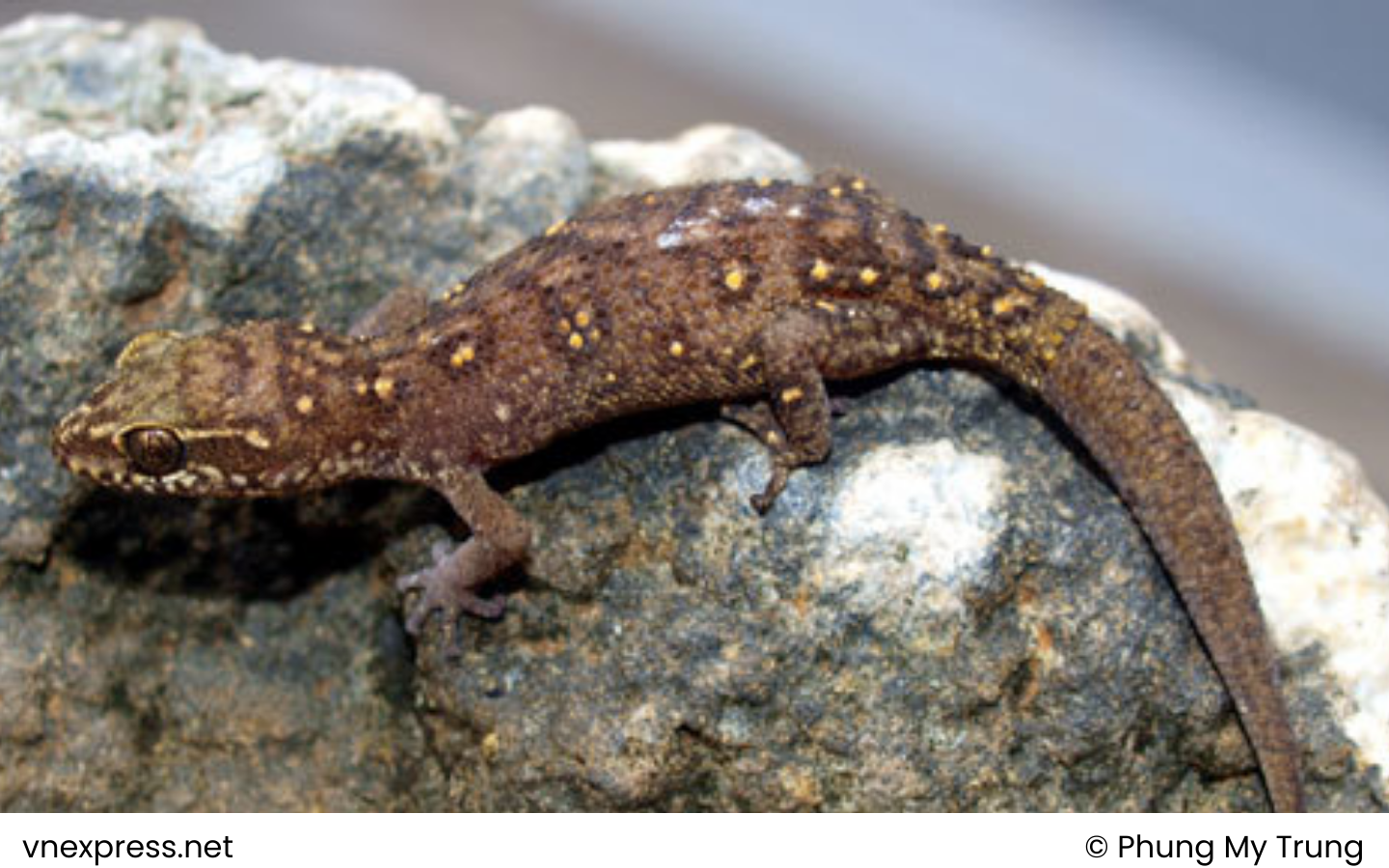
Science name: Dixonius taoi – Botov, Phung, Nguyen, Bauer, Brennan & Ziegler, 2015
Taxonomic: Animalia>> Chordata>> Reptilia>> Squamata >> Gekkonidae >> taoi
Species status: Endemic ; IUCN status: VU (Vunerable)
Description:
Physical characteristics: Dixonius taoi is a small gecko with a maximum snout-vent length (SVL) of 44 mm. It has 7 or 8 supralabials, 11 or 12 rows of keeled tubercles on its dorsum, and 21–23 ventral scale rows. Males possess 5 or 6 precloacal pores. The gecko is distinguished by a dark canthal stripe running from the rostrum, through the eye, and terminating at the back of the head. The second pair of postmental scales is significantly smaller than the first. The dorsum is brown with light yellowish/orange spots in one or two rows along the flanks, with irregular bands or a reticulated network of dark markings.
Coloration and Appearance: The dorsal side of the body is brown with yellowish-orange spots and irregular dark markings, which contrast against the body’s background color.
Distribution and habitat:
Elevation: Found near sea level.
Area: Dixonius taoi is endemic to Vietnam, specifically recorded from Phu Quy Island in Phu Quy District, Binh Thuan Province.
Habitat: This species inhabits coastal forested areas with vegetation such as Pandanus shrubs and can also be found in secondary forests and agricultural lands. They shelter under stones and among shrubs in these environments.
Behaviour and ecology:
Lifestyle: This species is nocturnal and fossorial, living under leaf litter and stones. Dixonius taoi is very agile, making it difficult to observe. It feeds on termites and ants found in its habitat.
Reproduction: The species is oviparous, with females laying two eggs under leaf litter at the beginning of the rainy season.
Conservation and status:
IUCN Red List Category and Criteria: Listed as Vulnerable (VU) due to its limited distribution and the specific habitat requirements it has on Phu Quy Island.
Threats: Habitat loss due to agricultural expansion and potential habitat degradation are concerns for the conservation of this species.
Conservation actions: As the species is known only from Phu Quy Island, its conservation depends on the protection of its natural habitat and continued monitoring of the population to prevent further declines.
Crocodile Trail – The Best Birding Trail in Cat Tien National Park
If you’re a birder or nature photographer planning a trip to Vietnam, few places offer [...]
Cong Troi Trail – Top 1 Dalat Plateau Birding Trail Experience
If you’re a birder or nature photographer planning a trip to Vietnam’s Central Highlands, the [...]
How to Identify the Greater Sand Plover, Tibetan Sand Plover and Siberian Sand Plover
Identification Differences within the Sand Plover Complex: The sand plover group, which was traditionally divided [...]
Highlights of Cat Tien National Park Reptiles and Amphibian Endemics
Spanning over 71,350 hectares of tropical forests, grasslands, and wetlands, Cat Tien National Park is [...]
Highlights of Cat Tien National Park Mammals in a World Biosphere Reserve
In addition to reptiles and birds, Cat Tien National Park is also rich in mammals, [...]
Kontum Plateau Endemic and Highlight bird
Kontum Plateau Endemic And Highlight Bird species like Chestnut-eared Laughingthrush and top birding routes while [...]